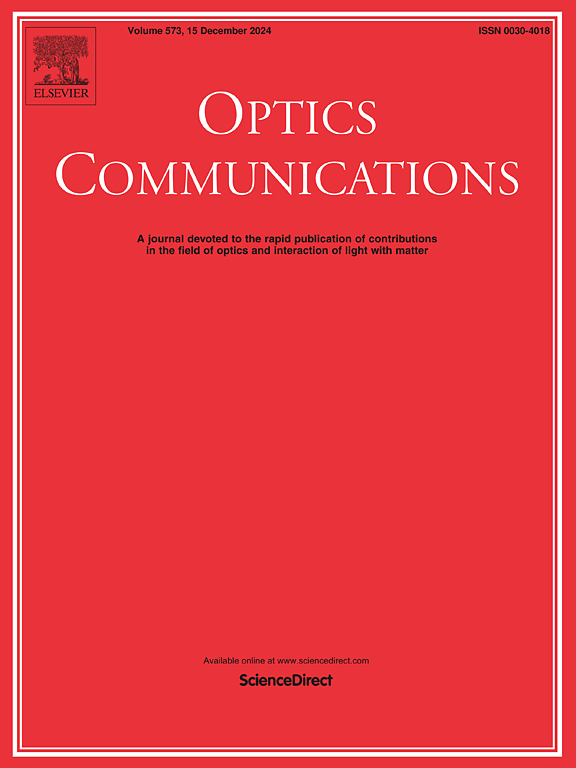Nanoparticle doping as a way to enhance holmium fiber lasers efficiency
IF 2.5
3区 物理与天体物理
Q2 OPTICS
引用次数: 0
Abstract
Highly-doped holmium fibers have been prepared using modified chemical vapor deposition in combination with nanoparticle-doping method. Within a series of various Al2O3 and Ho3+ concentrations, relations between fibers composition and their fluorescence and laser parameters have been studied. Al/Ho molar ratio equal to at least 50 was found to be the key factor for fibers with outstanding parameters. Fibers with slope efficiency above 80%, laser threshold below 100 mW and fluorescence lifetime up to 1.6 ms have been prepared. Thanks to high Al2O3 concentrations, obtained through nanoparticle doping, we were able to achieve high-performance fibers in a wide range of Ho3+ concentrations. An output power of 19 W with 81% slope efficiency was reached using fiber with almost 4000 ppm of Ho3+ and 10 mol.% of Al2O3. This result is encouraging for highly efficient high-power cladding-pumped holmium fiber lasers, and studied relations between fibers composition and their laser parameters will be used in the designing of such laser sources.
纳米粒子掺杂是提高钬光纤激光器效率的一种方法
采用改良化学气相沉积法和纳米粒子掺杂法制备了高掺杂钬光纤。在一系列不同浓度的 Al2O3 和 Ho3+ 中,研究了纤维成分与其荧光和激光参数之间的关系。研究发现,Al/Ho 摩尔比至少等于 50 是纤维获得出色参数的关键因素。制备出的光纤斜率效率超过 80%,激光阈值低于 100 mW,荧光寿命长达 1.6 ms。由于通过纳米粒子掺杂获得了高浓度的 Al2O3,我们得以在较宽的 Ho3+ 浓度范围内制备出高性能光纤。使用含有近 4000 ppm Ho3+ 和 10 mol.% Al2O3 的光纤,输出功率达到 19 W,斜率效率为 81%。这一结果对于高效高功率包层泵浦钬光纤激光器来说是令人鼓舞的,研究光纤成分与其激光参数之间的关系将用于设计此类激光源。
本文章由计算机程序翻译,如有差异,请以英文原文为准。
求助全文
约1分钟内获得全文
求助全文
来源期刊

Optics Communications
物理-光学
CiteScore
5.10
自引率
8.30%
发文量
681
审稿时长
38 days
期刊介绍:
Optics Communications invites original and timely contributions containing new results in various fields of optics and photonics. The journal considers theoretical and experimental research in areas ranging from the fundamental properties of light to technological applications. Topics covered include classical and quantum optics, optical physics and light-matter interactions, lasers, imaging, guided-wave optics and optical information processing. Manuscripts should offer clear evidence of novelty and significance. Papers concentrating on mathematical and computational issues, with limited connection to optics, are not suitable for publication in the Journal. Similarly, small technical advances, or papers concerned only with engineering applications or issues of materials science fall outside the journal scope.
 求助内容:
求助内容: 应助结果提醒方式:
应助结果提醒方式:


